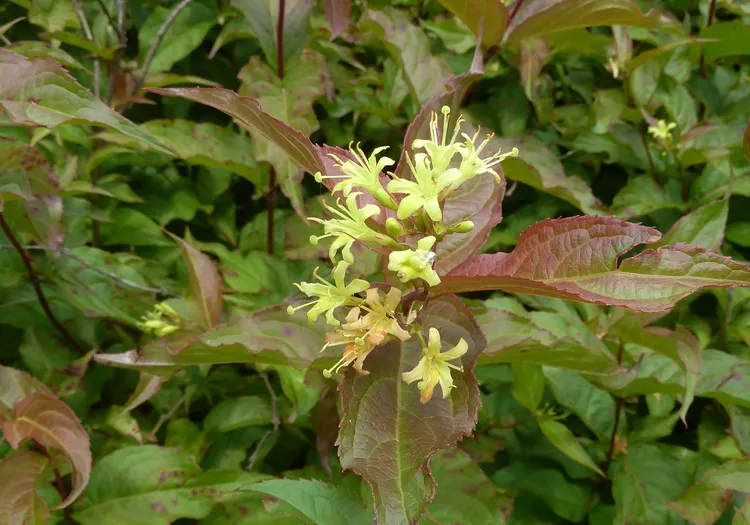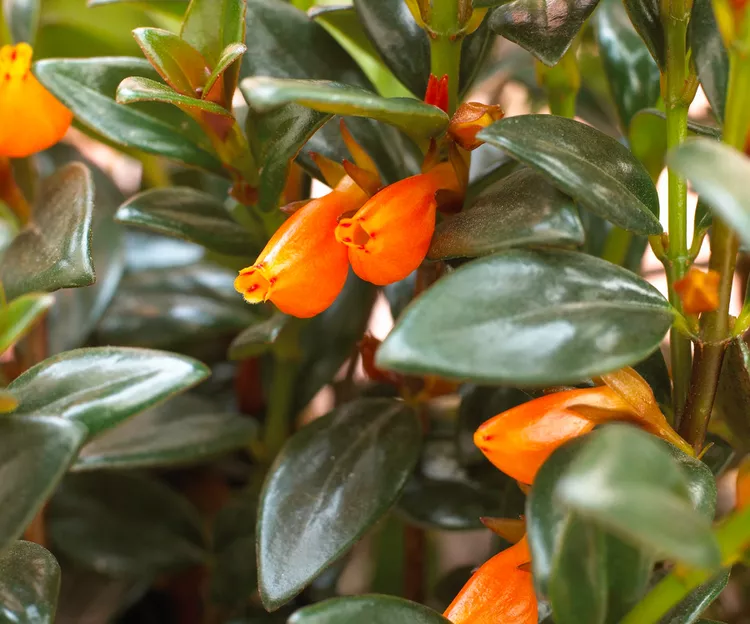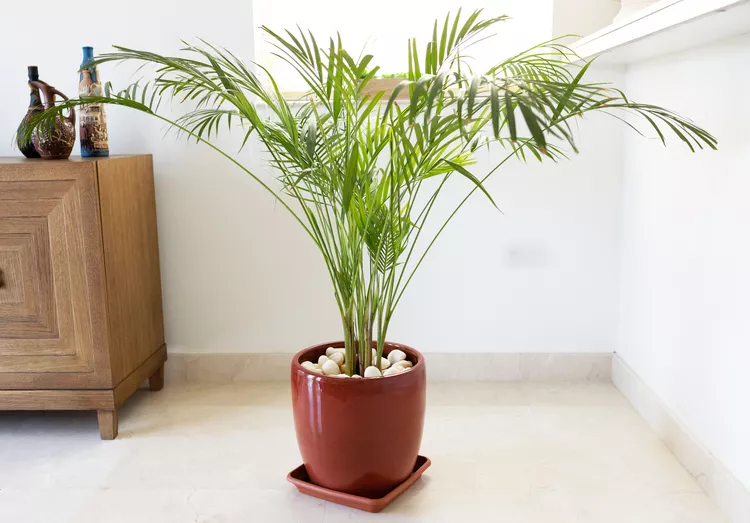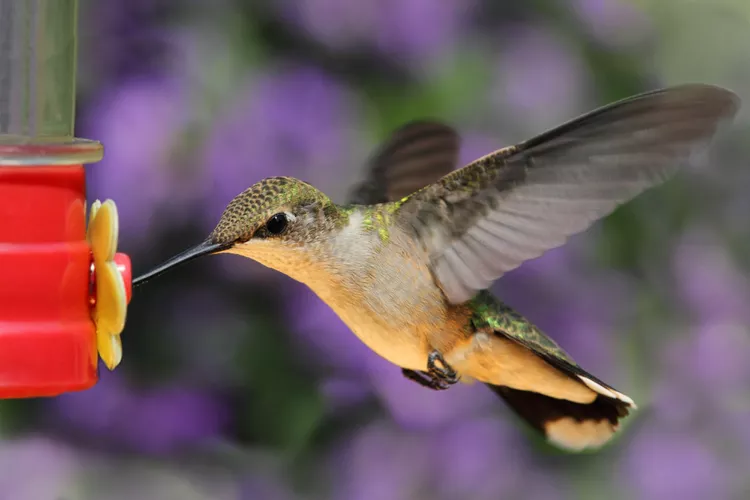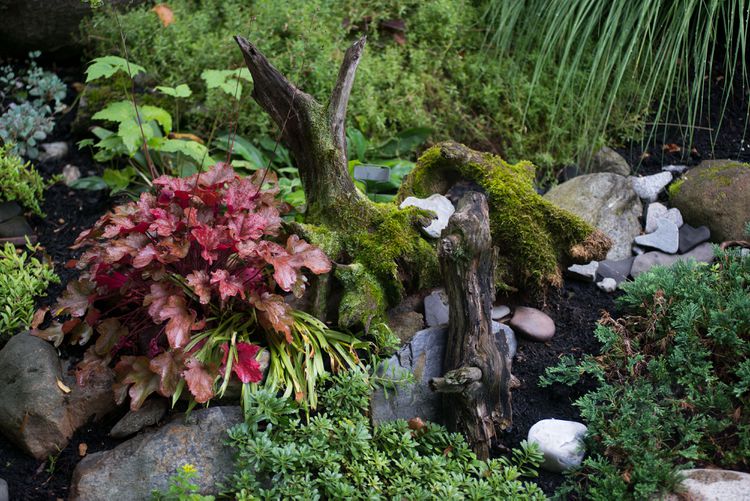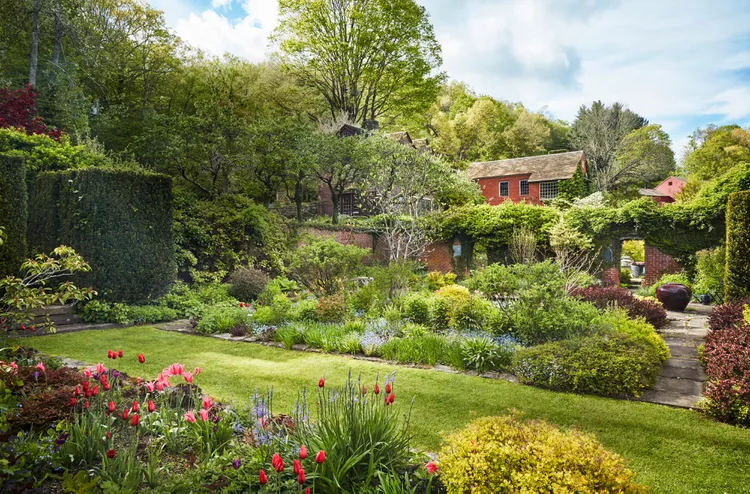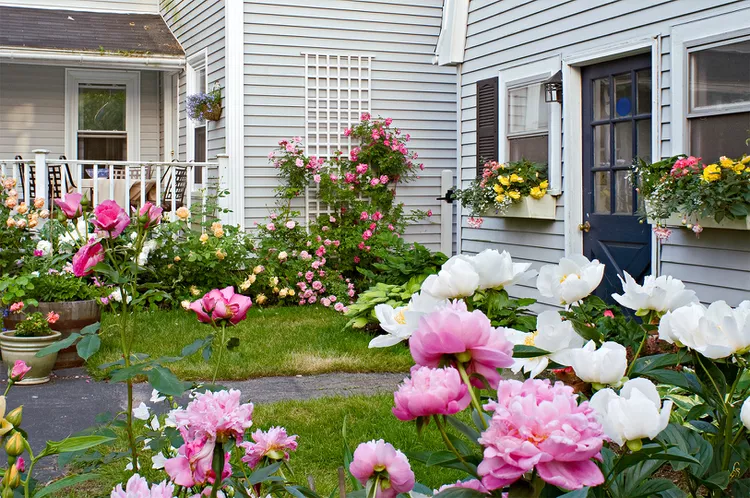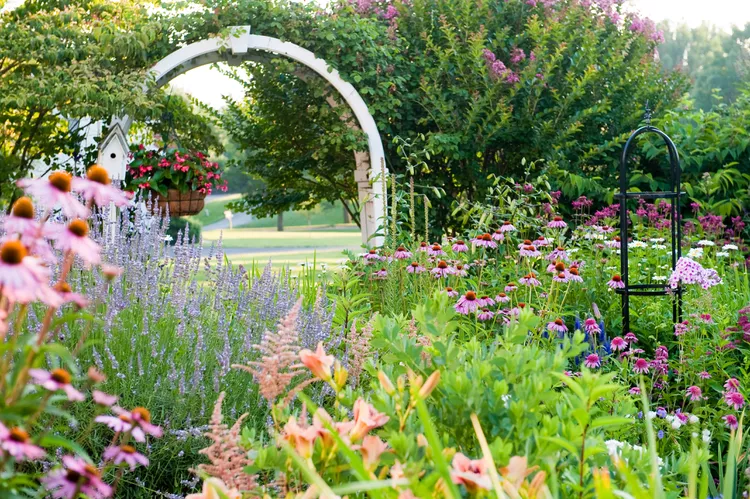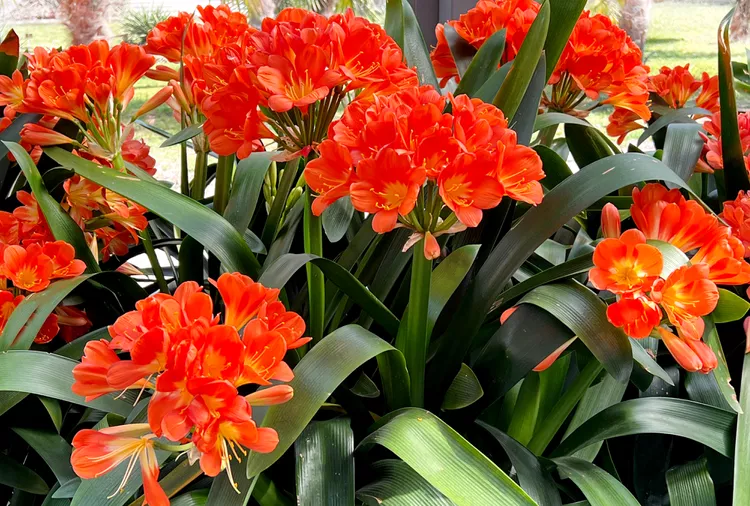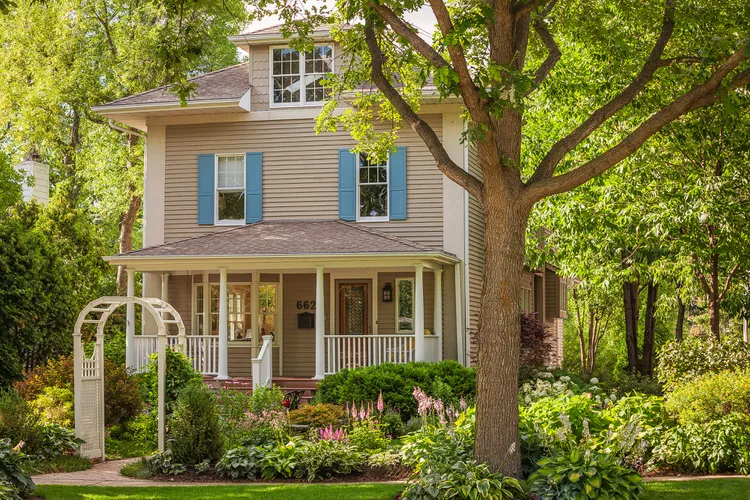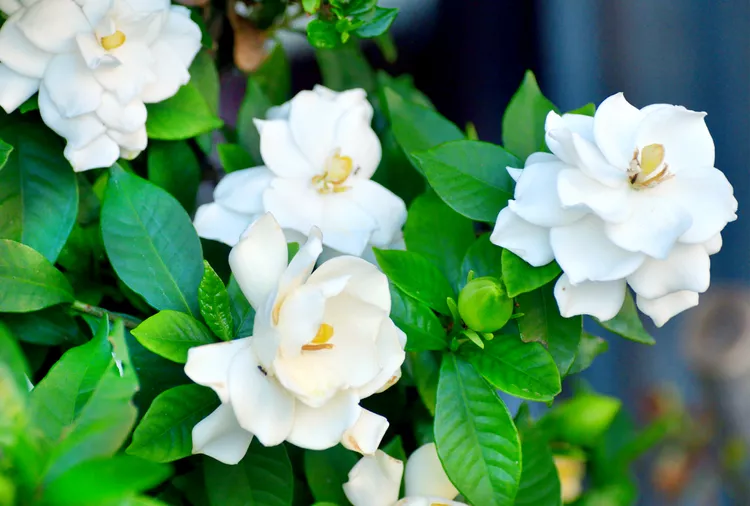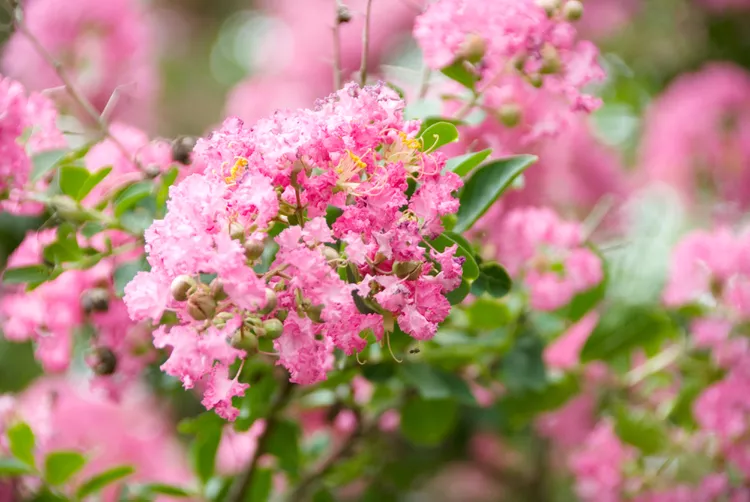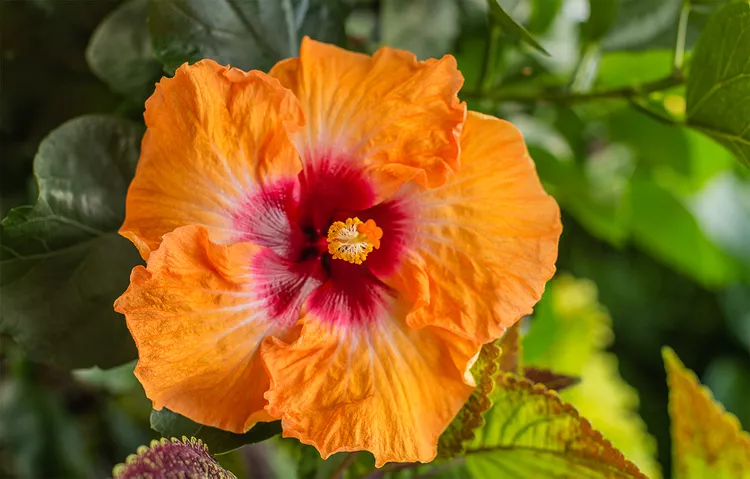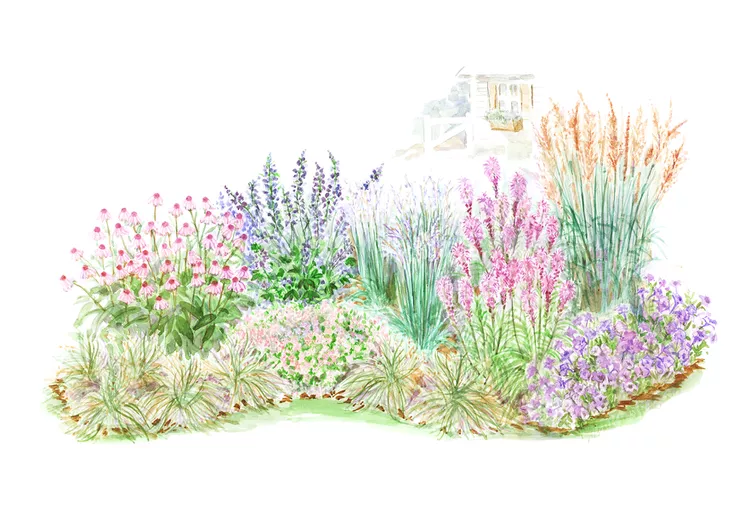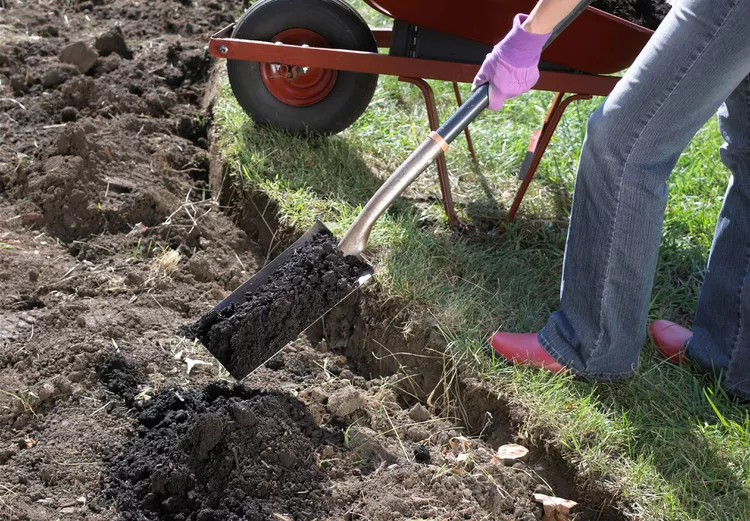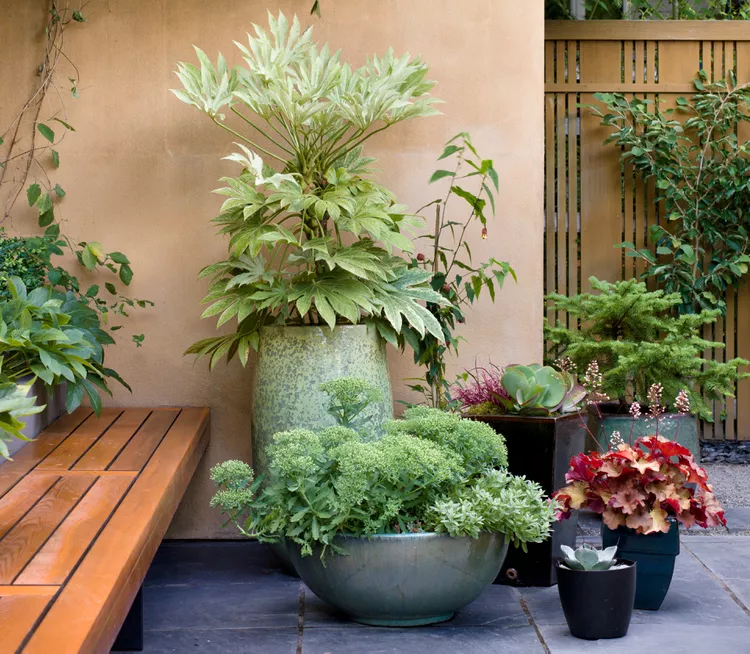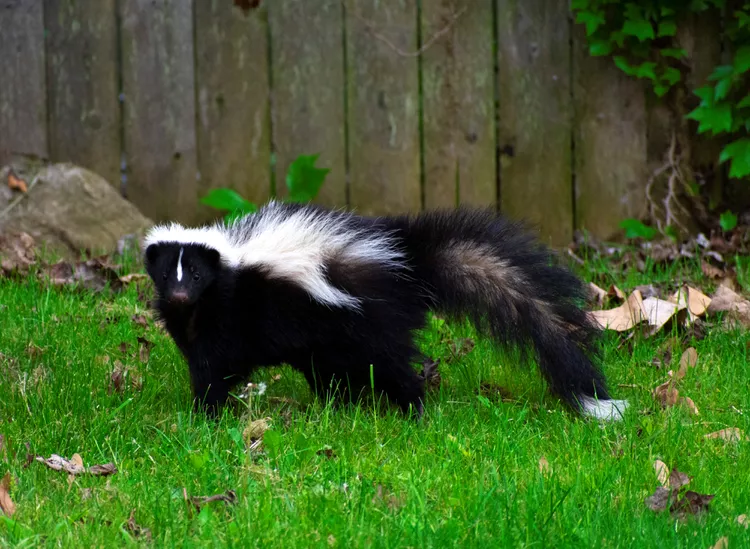Also called diervilla, bush honeysuckle is a native shrub that had been almost overlooked by the garden industry until fairly recently. But its pleasing habit, long season of summer blooms, and adaptability to light, temperature, and soil conditions have endeared this adaptable shrub to increasing numbers of gardeners. Plant breeders have also taken notice of bush honeysuckle and developed several outstanding selections—many with leaves that change color through the growing season.
Bush honeysuckle forms a neat mound that is slightly wider than its 2 to 3-foot height—and it spreads by suckers, so it’s a good choice for a low-mass planting or the foreground of a mixed shrub border. In addition to its pollinator-friendly flowers, its leaves put on a brilliant show in the fall, especially when grown in a sunny spot.
Bush Honeysuckle Overview
| Genus Name | Diervilla |
| Common Name | Bush Honeysuckle |
| Plant Type | Shrub |
| Light | Part Sun, Sun |
| Height | 2 to 3 feet |
| Width | 3 to 4 feet |
| Flower Color | Yellow |
| Foliage Color | Blue/Green, Chartreuse/Gold, Purple/Burgundy |
| Season Features | Colorful Fall Foliage, Summer Bloom |
| Special Features | Low Maintenance |
| Zones | 3, 4, 5, 6, 7, 8 |
| Propagation | Stem Cuttings |
| Problem Solvers | Drought Tolerant, Groundcover, Slope/Erosion Control |
Where to Plant Bush Honeysuckle
Because it’s so adaptable, you can plant bush honeysuckle almost anywhere in the yard—although it will flower more prolifically and produce better fall foliage color if it gets at least half a day of sun. It’s useful for a low-growing hedge, spacing plants 2 to 3 feet apart. It can be planted on it's own or in groups as an addition to naturalized or pollinator gardens in sun or part shade, or in a mixed-shrub border. This native shrub also grows well on slopes, where it helps stabilize the soil and prevent erosion.
How and When to Plant Bush Honeysuckle
To plant bush honeysuckle in spring or fall, dig a hole about the same depth as its container and twice as wide. Loosen the roots of the shrub before placing it in the hole so that the top of the root ball is level with the soil. Fill in around the shrub with native soil and water well. Mulching with an organic mulch will help prevent weeds, reduce water evaporation from the soil, and moderate soil temperature fluctuations.
Bush Honeysuckle Care Tips
This tough, adaptable shrub does best in well-drained soils with dry to medium moisture, in full sun or part shade. Once planted, it requires minimal care, although it’s best to water it regularly during its first growing season until roots are well established.
Its natural habit is to spread by suckers, so if you want to keep it contained, you will need to remove suckers that form outside of your desired area. You can transplant the suckers to other areas of the garden or share them with friends.
Light
Bush honeysuckle adapts to full sun (more that 6 hours of direct light) or part shade. The more sun it gets, the more spectacular the fall foliage color will be.
Soil and Water
Any well-drained soil will do for this adaptable shrub, even those on rocky slopes. It’s not too particular about soil pH, but does best in a slightly acid to neutral soil (pH 6.0 to 7.0). It is best to keep bush honeysuckle watered for its first growing season, but established plants tolerate drought very well.
Temperature and Humidity
Bush honeysuckle is native a wide range of North America, from southeastern Canada to the mountains of Alabama and Georgia. It is quite cold tolerant but it prefers a location where summer temperatures are not too hot. It adapts to both high and low humidity.
Fertilizer
No fertilizer is generally needed at planting time. Young plants may benefit from the occasional addition of a slow-release fertilizer to encourage growth and flowering. Mature plants generally need no additional fertilizer.
Pruning
Little pruning is usually needed because it naturally grows in a pleasing mounded shape. If you want to refresh your bush honeysuckle, it can be pruned in spring. It can even be cut all the way to the ground if you want—it will grow back quickly. Cut suckers as they arise if they grow beyond the space you want them.
Pests and Problems
Bush honeysuckle has no serious pest or disease problems. Powdery mildew and fungal leaf spots sometimes occur during wet periods, but usually require no treatment.
How to Propagate Bush Honeysuckle
The easiest way to start new bush honeysuckle plants is to simply dig up a sucker with some roots attached. Transplant the suckers to containers another spot in the garden and keep them watered until their roots become established. You can also propagate this shrub from either softwood or semi-hardwood cuttings. While seed propagation is possible, it takes quite a long time to produce a mature shrub from seed.
Types of Bush Honeysuckle
All the listed varieties produce small bright yellow flowers all summer long. They vary, however in their foliage colors.
‘Copper’
The new growth of ‘Copper’ is copper red and it not only appears in spring, but on new growth throughout the season. In fall the leaves turn red and bronze.
‘Kodiak Red’
New spring growth of ‘Kodiak Red’ is deep burgundy. In summer leaves turn green with red margins and in fall they morph to brilliant red.
‘Kodiak Orange’
Winner of the Landscape Shrub of the Year in 2021, the emerging leaves of Kodiak Orange are bright orange yellow with an undertone of green. They turn vivid orange-red in fall. This shrub adapts well to dry shade.
‘Firefly Nightglow’
This variety produces dark purple, nearly black leaves that contrast dramatically with the bright yellow blossoms.
‘Cool Splash’
‘Cool Splash’ has variegated leaves—green with white margins—that provide a long season of cool interest in the garden.
Bush Honeysuckle Companion Plants
There are a handful of plants that grow well next to the bush honeysuckle shrub. Try these companion plant combinations in your garden.
Panicle Hydrangea
The panicle hydrangea (Hydrangea paniculata) grows 12 to 20 feet tall and wide, depending on the variety. Its white flower clusters and deep green leaves are born on gracefully arching stems. They thrive in sun or part shade and tolerate drought.
Ninebark
A ninebark (Physocarpus opulifolius) variety with dark leaves (such as Diabolo, shown here) contrasts well with the colorful leaves and yellow blooms of bush honeysuckle. Ninebarks grow 5 to 6 feet tall and wide and prefer a sunny site but will tolerate part shade.
American Elderberry
An elderberry (Sambucus canadensis) variety with yellow-green leaves, such as ‘Lemony Lace’ or 'Sutherland Gold' (shown here) contrasts nicely with bush honeysuckle varieties with dark or brightly colored foliage. They grow 4 to 7 feet tall and wide and are adaptable to the same conditions as bush honeysuckle.
